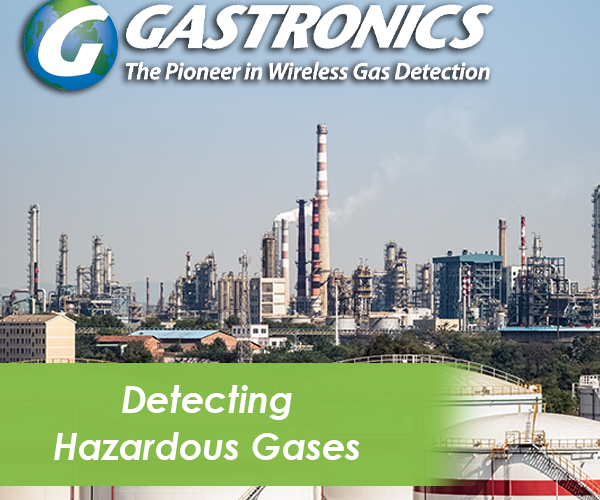
Detecting Hazardous Gases
Gases are used extensively around the world for a variety of reasons, but many possess properties that have the potential to cause harm to the health and safety of people if not managed effectively. Ranging from potential hazards such as flammability to asphyxiation and more health-related problems, gas detection systems and monitoring capabilities are vital to maintaining safe environments.
Used in many industrial processes, gases may also be produced as an unwanted by-product in some activities such as oil production, refining and chemical manufacturing. Managing the risks can severely reduce or eliminate harmful gas leaks. While it’s not probably to eliminate all risks of a gas leak, organizations must take measures to effectively reduce the risks.
There are a number of factors that affect the need for speed of detection: the types of gases your company utilizes, temperature, pressure, storage, emergency plans, and more. Certain environments require much more detailed methods of detection and protection, as a leak would have much greater ramifications; for example, petrochemical plants carry a high risk of gas leakage, which can lead to an explosion or fire that not only damages equipment but puts lives at serious risk. Gas detectors are used not only to keep operational processes going, but to keep people safe by detecting any gas leaks.
The location and sensitivity of a detector will depend on where the gas is likely to escape from and when. Although leaks are the result of a number of issues, the most frequent causes are human error, internal and external corrosion, wear or faulty equipment, poor maintenance, or accelerated chemical reactions that increase pressure. Wear and tear are often related to poor inspection processes and inadequate maintenance. Workers must also be fully aware of all gases used, produced, or discharged in the areas where they work.
Most systems can be broken down into two categories: fixed and portable. Portable electronic personal gas detection monitors allow an individual to work in a potentially hazardous area, by sounding a warning alarm when the gas rises to an unsafe level and requires action. Portable detection is used to help workers undertaking tasks such as maintenance, where employees might disturb or release gas that wouldn’t normally be detectable in that environment. Fixed systems are preferred in processes where safety and static systems are more constant. Fixed systems tend to protect by providing a warning, not just to the individual wearing a portable monitor. The position and placement and type of fixed monitor used will depend on many factors. If they are used outside, they may need to be very close to the potential leak point to ensure that the ambient weather conditions do not interfere with the gas before detection is enabled.
Gastronics, Inc. began in 1997 developing combustible and toxic gas monitors and licensed radio telemetry systems for industry. With over 20 years of experience, our experts provide companies gas detection and telemetry solutions fitting all their needs. We assist our customers by finding potential hazardous conditions and offering reliable solutions to ensure all personnel are safe.
To learn more about the products we offer or for specific solutions in your industry, click here. If you have any questions regarding your gas detection needs or would like to speak with one of our specialists, contact us today!


0 comments on Detecting Hazardous Gases